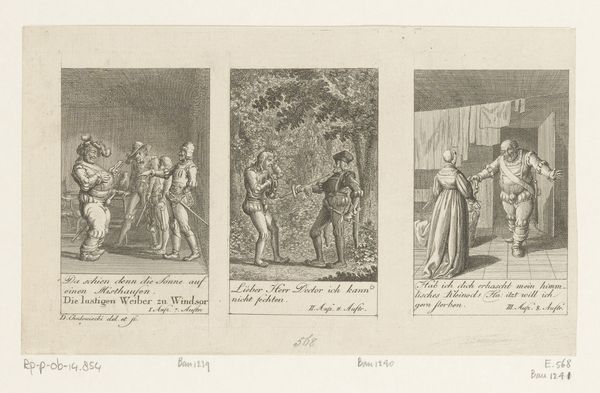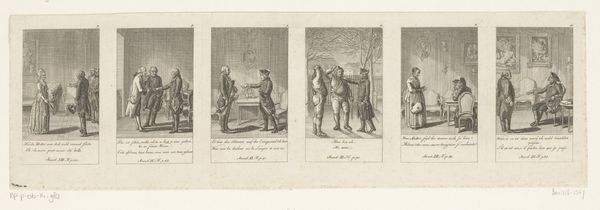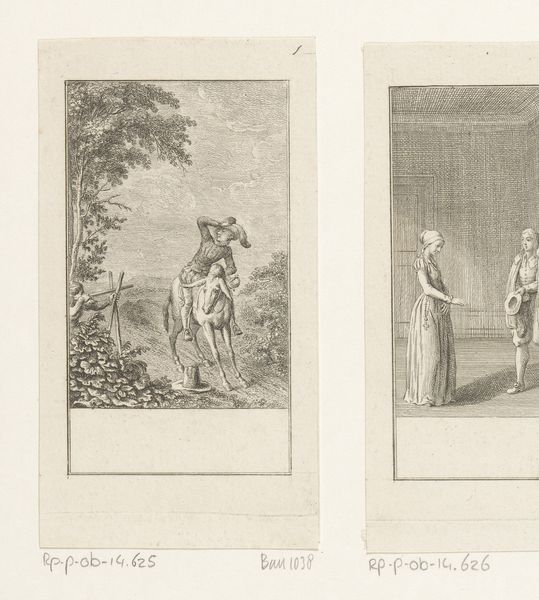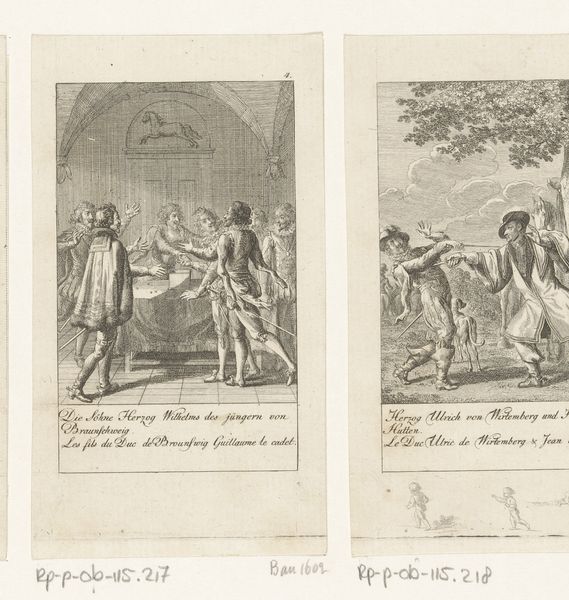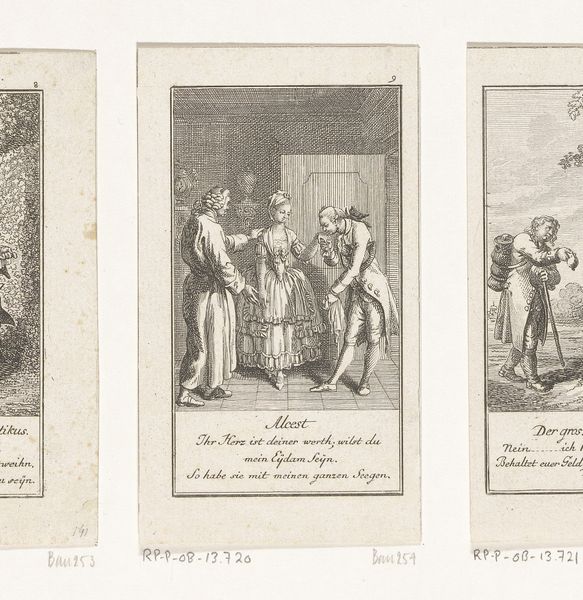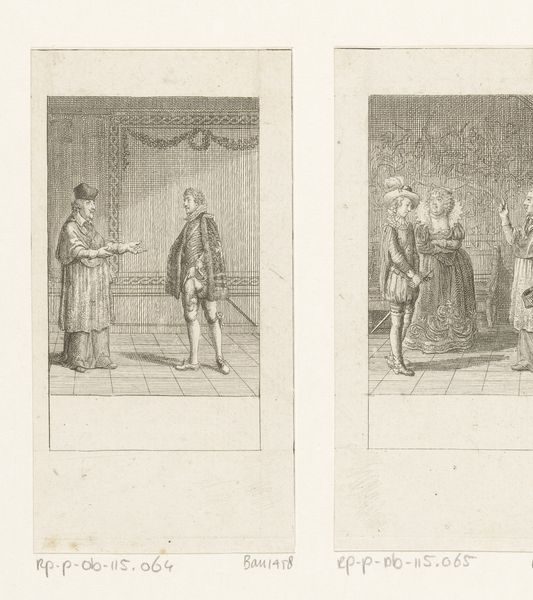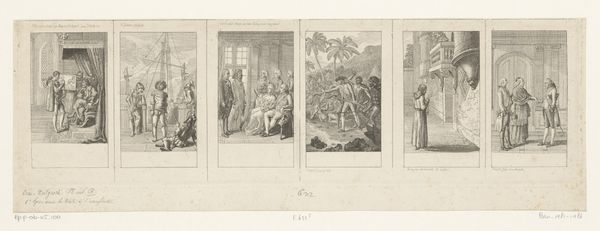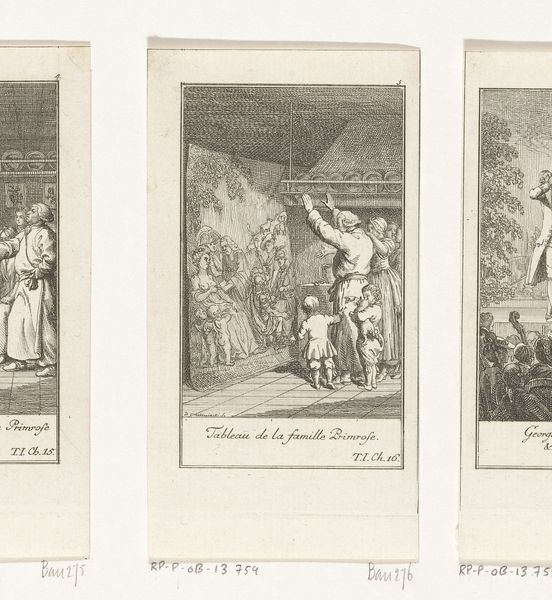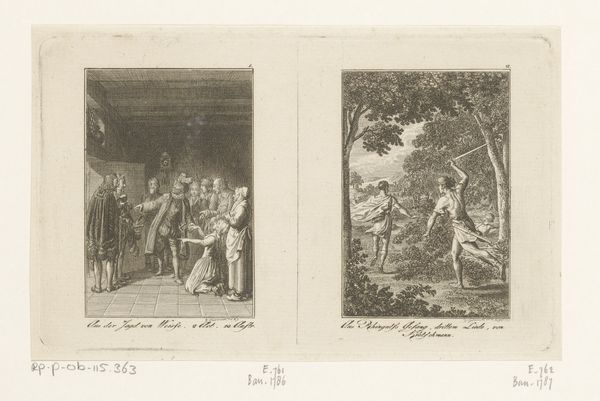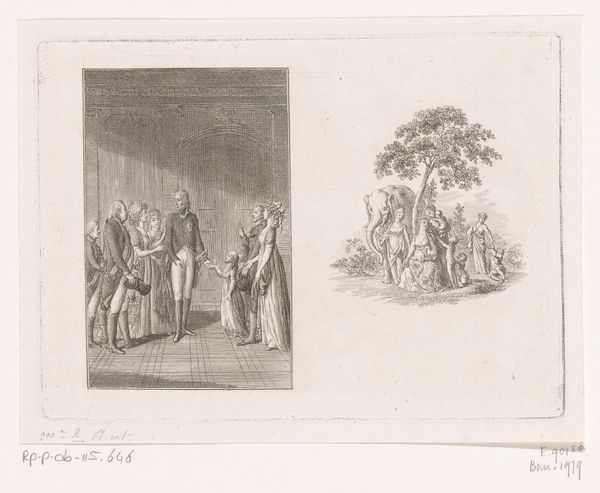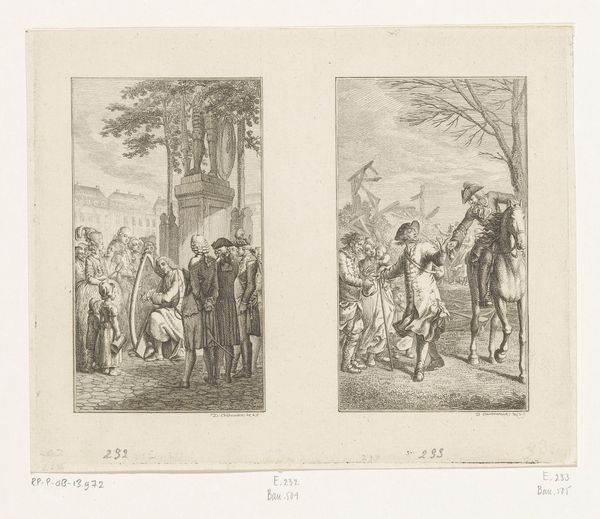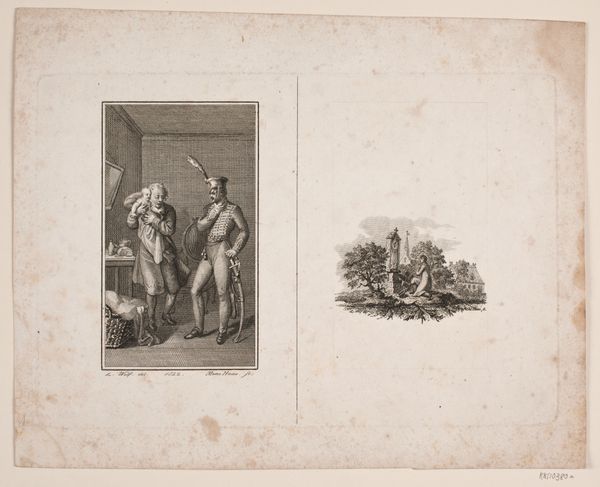
Dimensions: height 104 mm, width 241 mm
Copyright: Rijks Museum: Open Domain
Editor: Here we have Daniel Nikolaus Chodowiecki’s “Vier scènes uit Gellert's Fabeln und Erzählungen,” created in 1775 using etching. The piece presents four distinct scenes side-by-side, each like a vignette, with fine detail. What can you tell me about how these types of narrative art were viewed during this period? Curator: Chodowiecki's work here presents an interesting case study of the intersection of art and public morality during the Enlightenment. Prints like these, reproduced and widely circulated, played a vital role in shaping public opinion. The "Gellert's Fabeln" were moral tales meant to educate and edify. Consider the role of the *Rijksmuseum* itself. Does the acquisition of this type of art shape what's considered Dutch artistic patrimony? Editor: So, it was meant to have a specific effect on the people looking at it? Were these works critiquing social issues or merely reflecting accepted norms? Curator: Both! While reinforcing certain values, these images often subtly critique aristocratic excesses, for instance. The print medium itself allowed these critiques to reach wider audiences, outside traditional elite art circles, affecting civic discourse. Did such didactic images become, or were they perceived, as propaganda of some form? Editor: That's fascinating, so it's like early social commentary distributed via accessible art. I hadn't considered the ripple effect of printed moral lessons in etching. Curator: Precisely. Chodowiecki utilized etching's reproducibility for the broader accessibility of moral instruction and influenced perceptions. Today we look at them for insight on social expectations. How does seeing this as *public art*, or *art for the people*, change your perception? Editor: That reframes it completely! I now see it as evidence of social agency through art in everyday life. Curator: Indeed. Recognizing the political and social work this art did underscores its relevance beyond aesthetics. The narrative and cultural intent reshapes our perception of its role in art history.
Comments
No comments
Be the first to comment and join the conversation on the ultimate creative platform.
